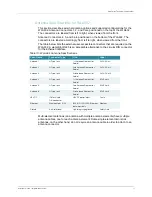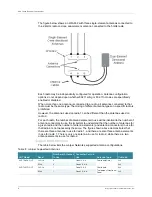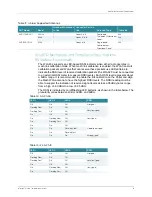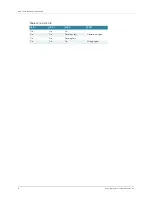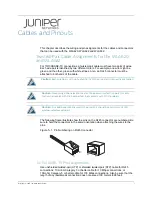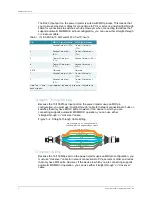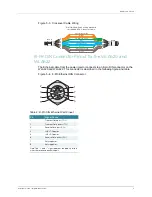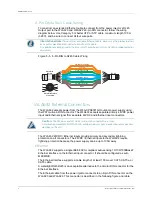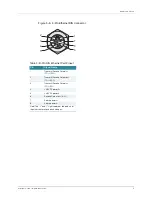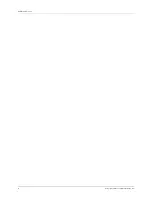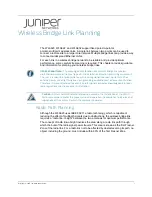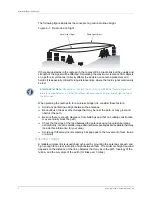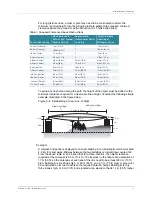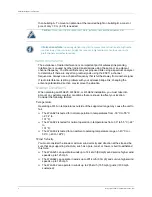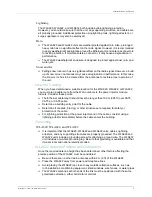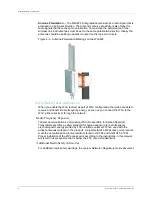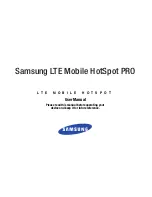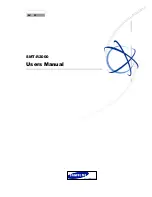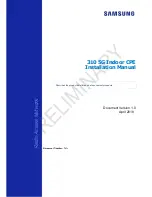
Copyright © 2012, Juniper Networks, Inc.
5
Wireless Bridge Link Planning
Lightning
The WLA620, WLA622, and WLA632 both include built-in lightning protection.
However, you should make sure that the unit, any supporting structure, and cables are
all properly grounded. Additional protection using lightning rods, lightning arrestors, or
surge suppressors may also be employed.
Rain
The WLA620 and WLA622 units are weatherproofed against rain. Also, prolonged
heavy rain has no significant effect on the radio signal. However, it is recommended
to apply weatherproof sealing tape around the Ethernet port and antenna connectors
for extra protection. If moisture enters a connector, it may cause a degradation in
performance.
The WLA632 weatherproof enclosure is designed to protect against dust, rain, and
water jets.
Snow and Ice
Falling snow, like rain, has no significant effect on the radio signal. However, a build
up of snow or ice on antennas may cause a degradation in performance. In this case,
the snow or ice has to be cleared from the antennas to restore proper operation of
the unit.
Ethernet Cabling
When you have determined a suitable location for the WLA620, WLA622, or WLA632,
you must plan a cable route from the WLA outdoors to the power injector module
indoors. Consider these points:
The Ethernet cable length should never be longer than 100 m (328 ft) over CAT5,
CAT5e, or CAT6 cable.
Determine a building entry point for the cable.
Determine if conduits, bracing, or other structures are required for safety or
protection of the cable.
For lightning protection at the power injector end of the cable, consider using a
lightning arrestor immediately before the cable enters the building.
Grounding
WLA620, WLA622, and WLA632
It is important that the WLA620, WLA622 and WLA632 units, cables, lightning
arrestors, and any supporting structures are properly grounded. The WLA620 and
WLA622 units include a grounding screw for attaching a ground wire. The WLA632
unit includes a two-hole grounding lug. Be sure that grounding is available and that
it meets local and national electrical codes.
WLA622 Antenna Position and Orientation
Once the required antenna height has been determined, other factors affecting the
precise position of the WLA622 must be considered:
Be sure there are no other radio antennas within 2 m (6 ft) of the WLA622
Place the WLA622 away from power and telephone lines
Avoid placing the WLA622 too close to any metallic reflective surfaces, such as
roof-installed air-conditioning equipment, tinted windows, wire fences, or water pipes
The WLA622 antennas at both ends of the link must be positioned with the same
polarization direction, either horizontal or vertical

